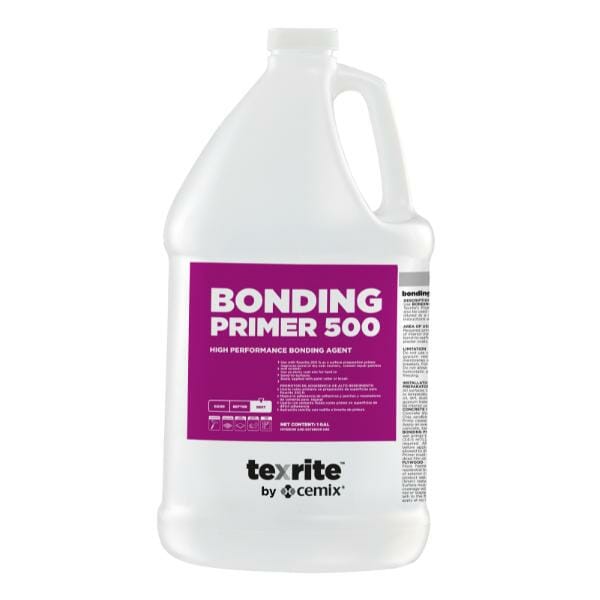
BONDING PRIMER 500
High performance bonding agent
Description
Use
BONDING PRIMER 500 for approved interior installations prior to the application of Texrite’s Flowrite 250 or Flowrite 250 FS products to prevent early loss of water and aid in adhesion. May also be used as an admixture to Flowrite 250 or Flowrite 50 FS powder. BONDING PRIMER 500 must be diluted at a ratio of 1:1 (by volume) with clean, potable water. Fordetailed application instructions with the Flowrite 250 or Flowrite 250 FS follow instructions on the bags or product data sheets.
Benefits
- Use with flowrite 250 or flowrite 250 fs as a surface preparation primer
- Improves bond of dry-sets mortars, cement repair patches and screeds
- Use as slurry coat mix for hard to bond-to-surfaces
- Easily applied with paint roller or brush
COLORS:
White
PACKAGING:
Primer 1 gallon container, four 1 gallon/case.
